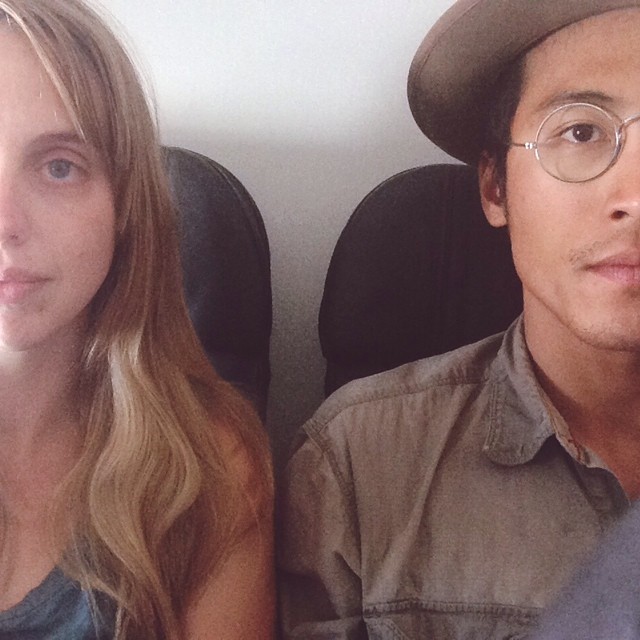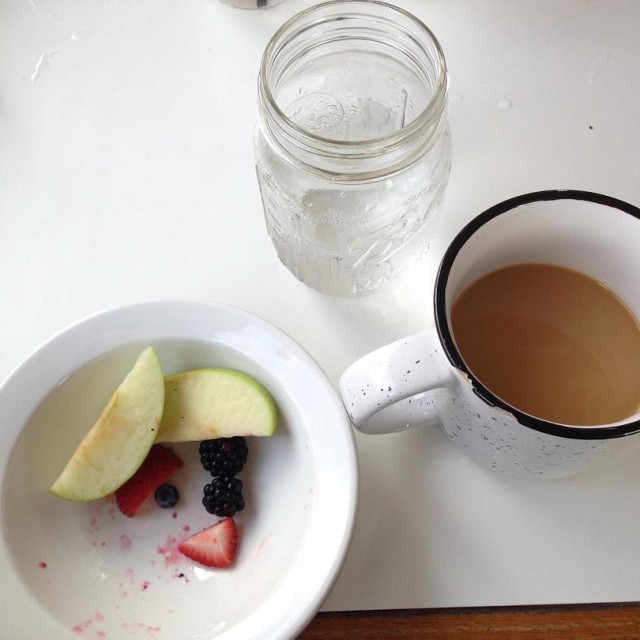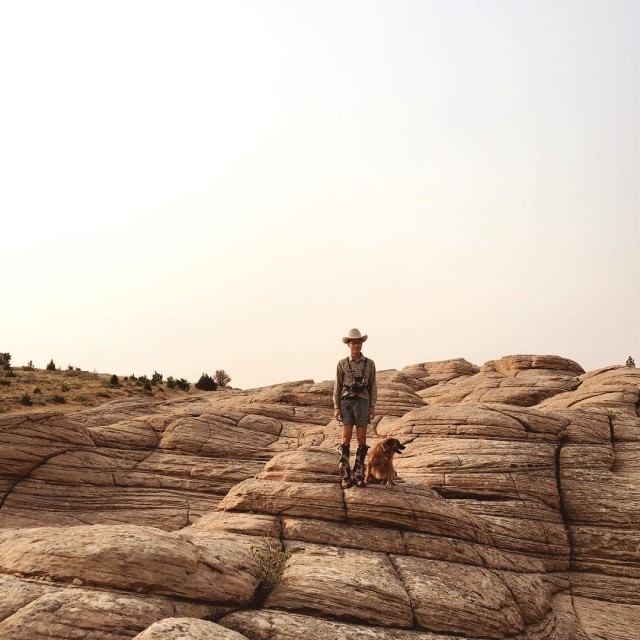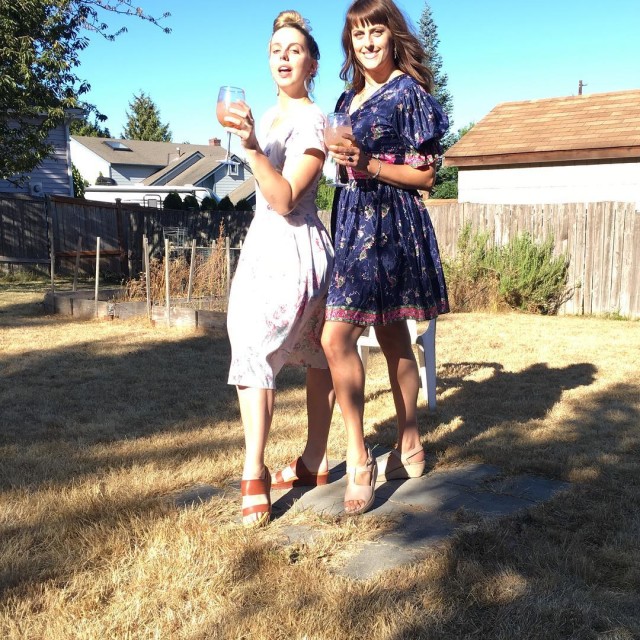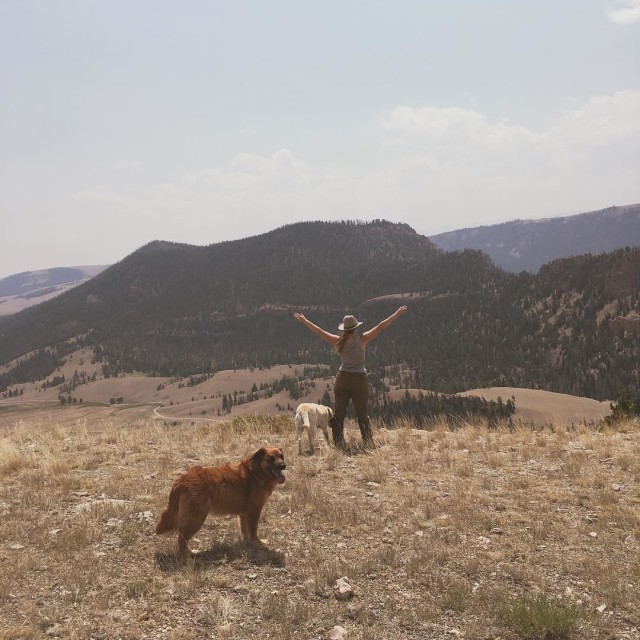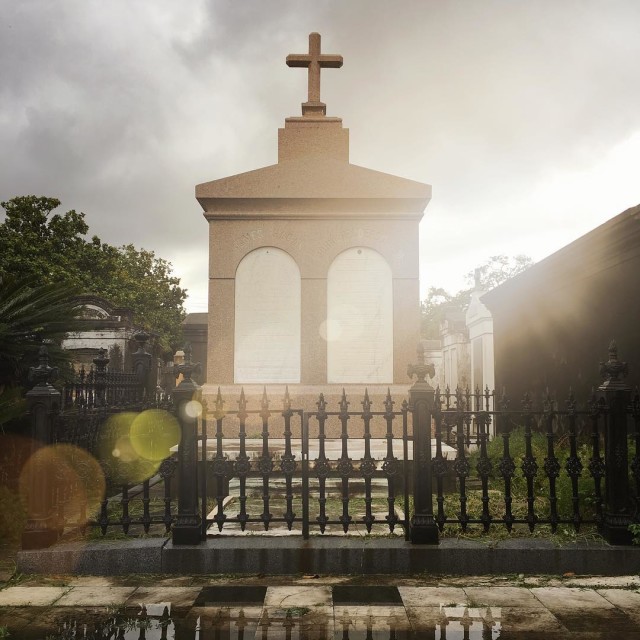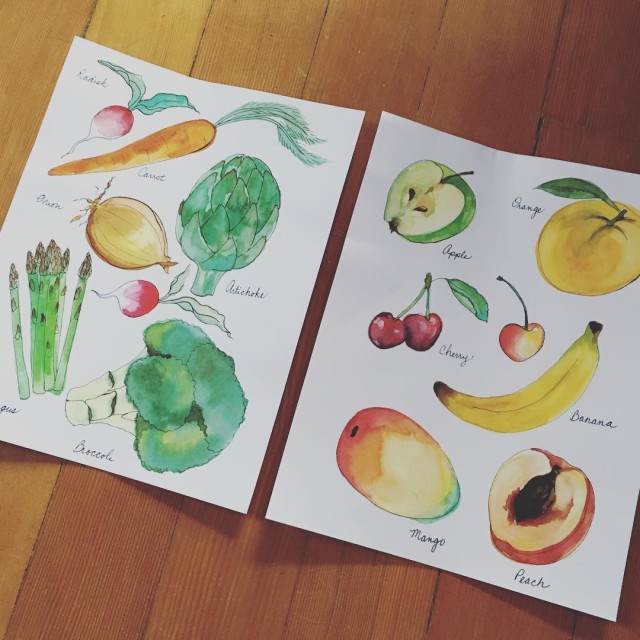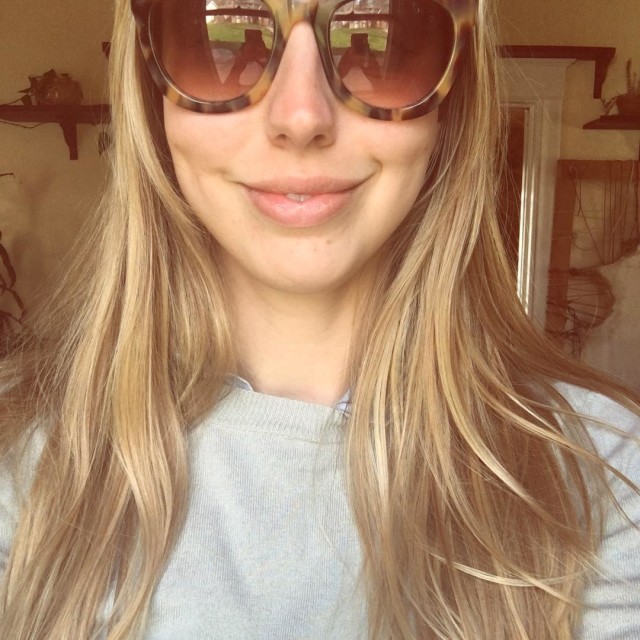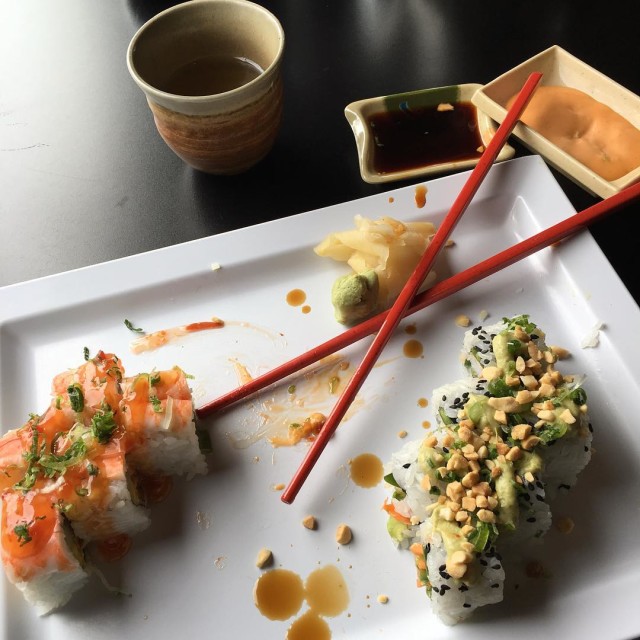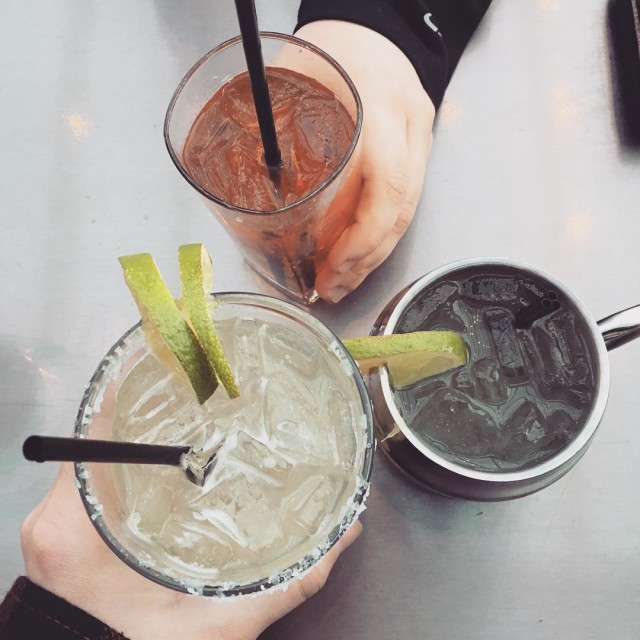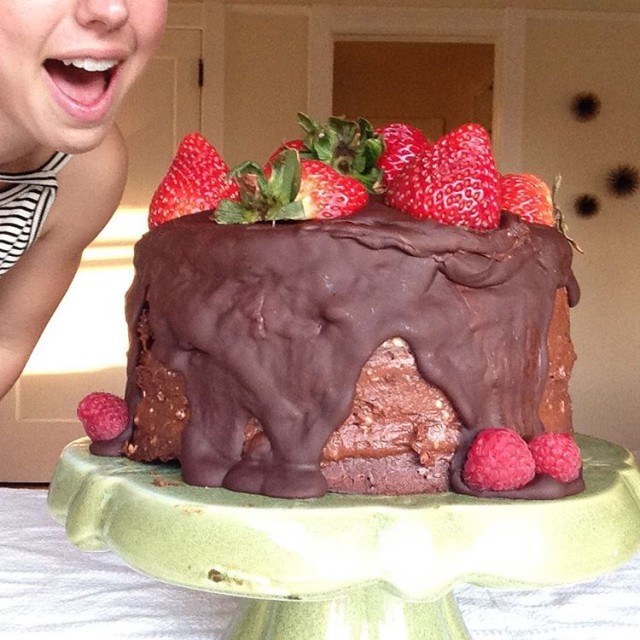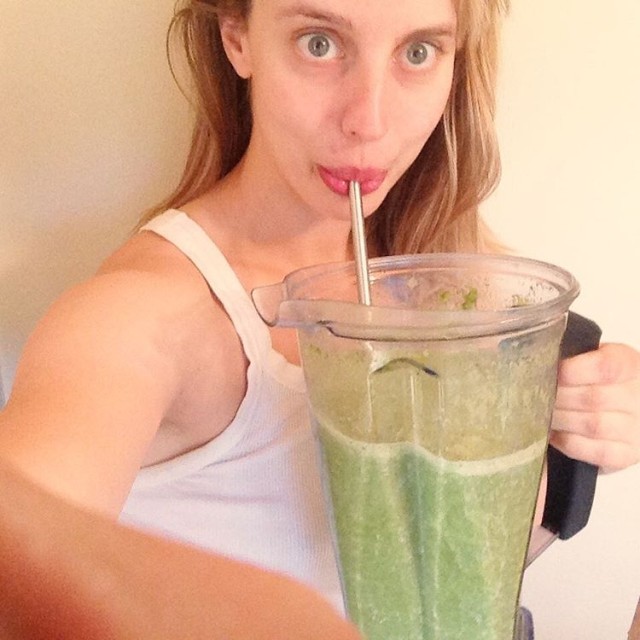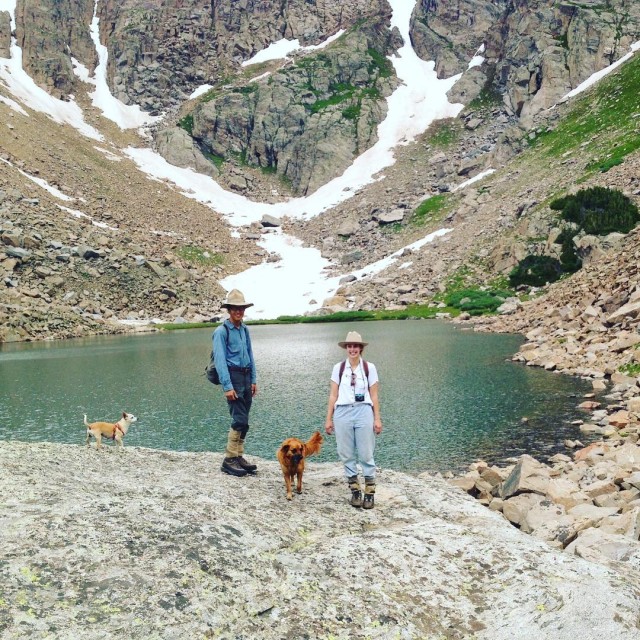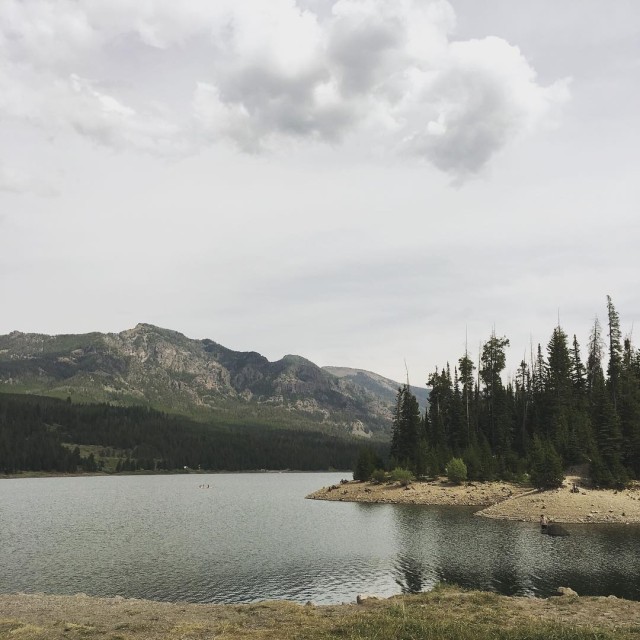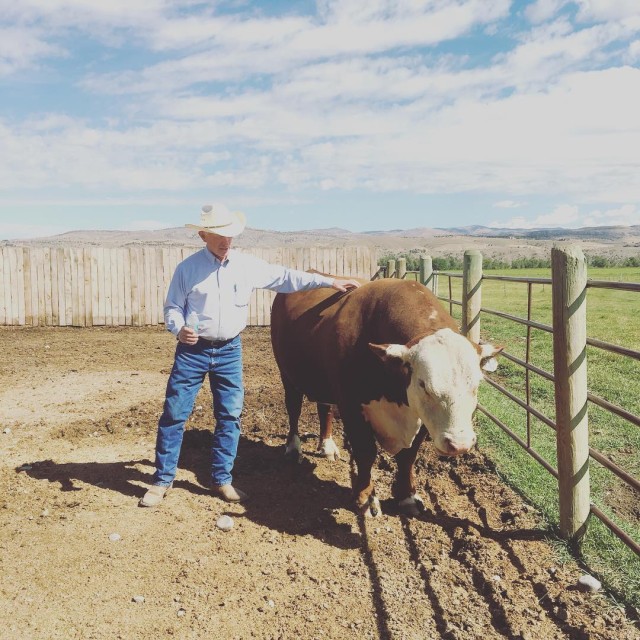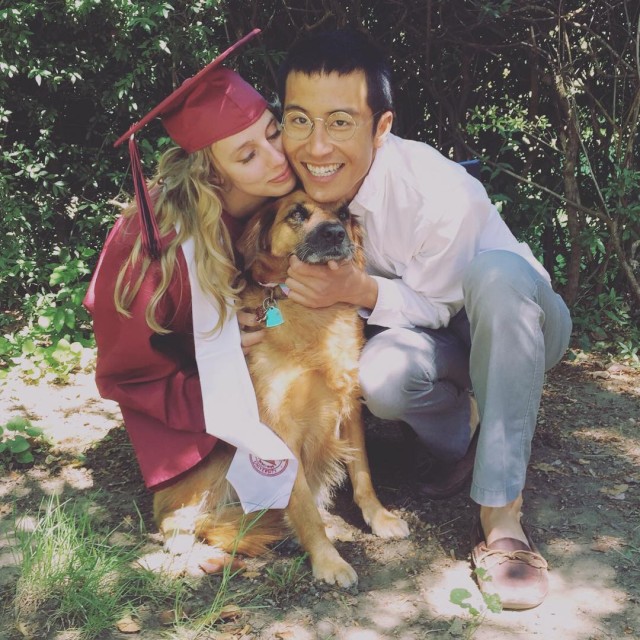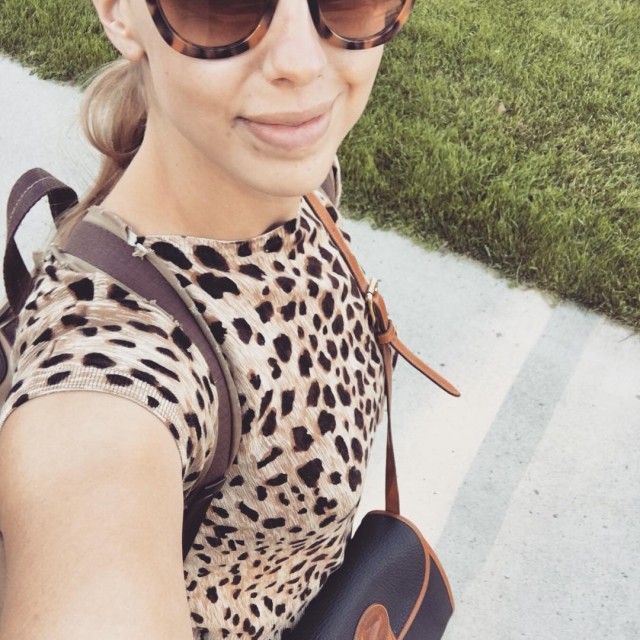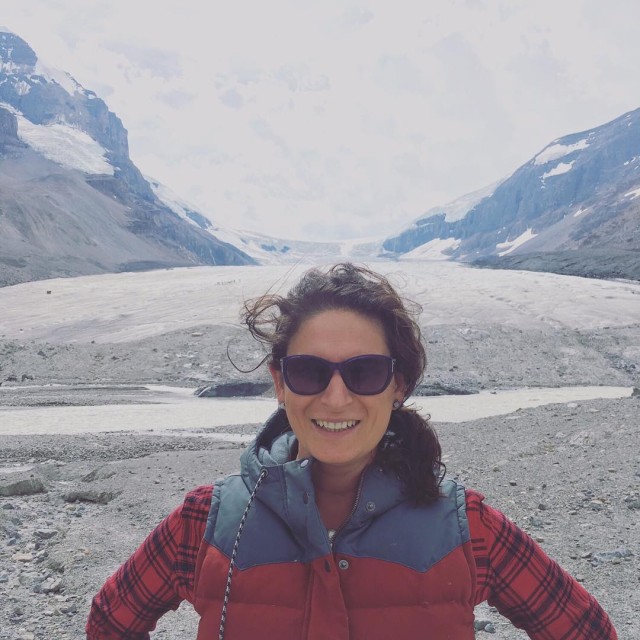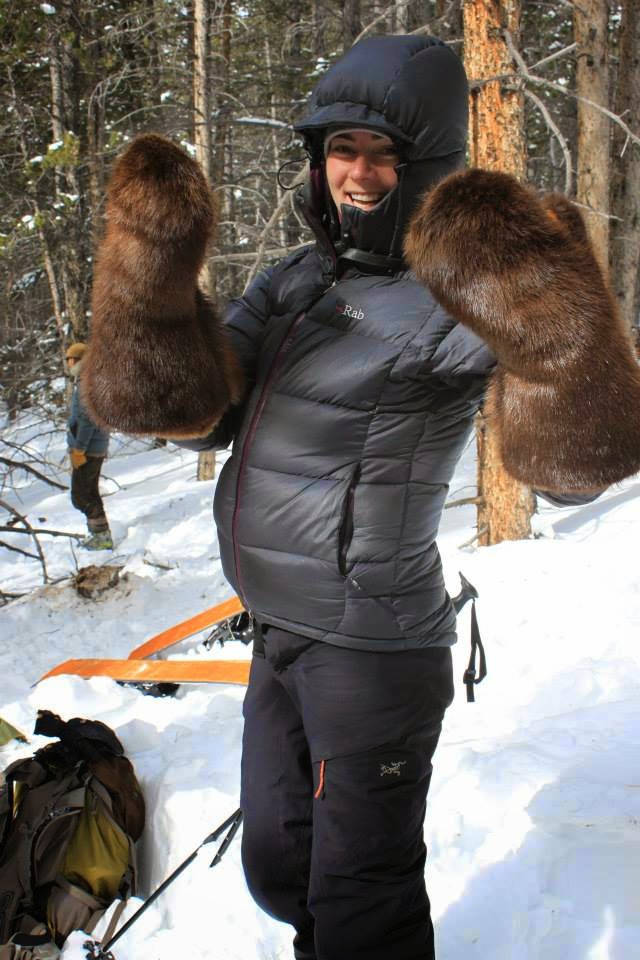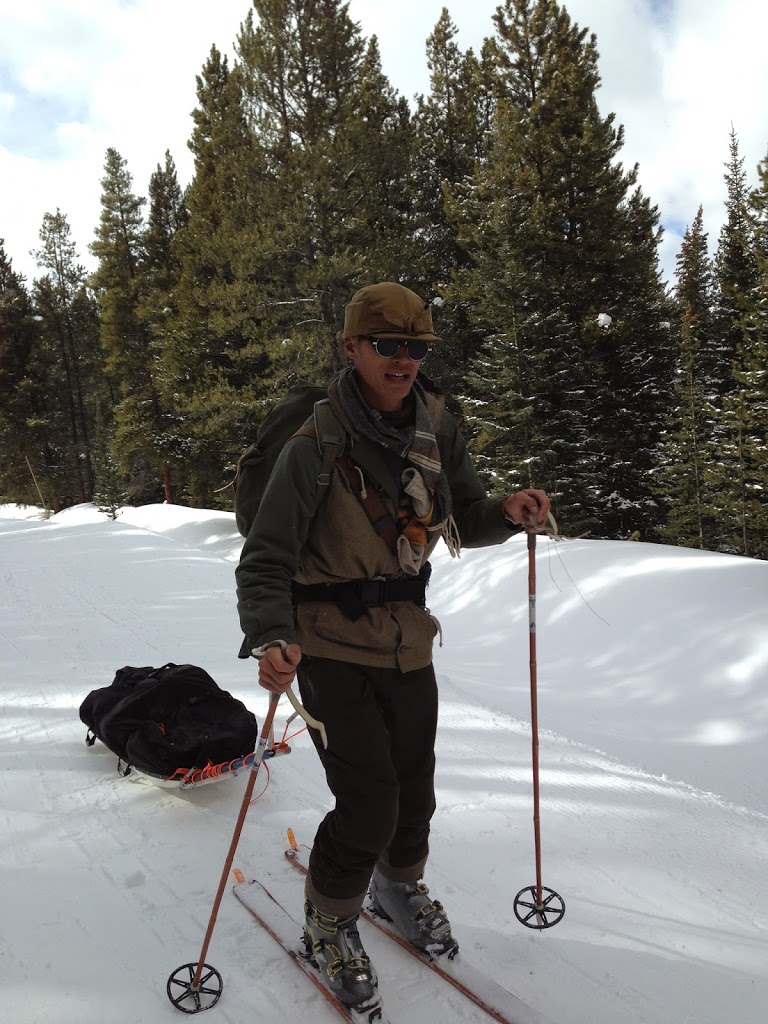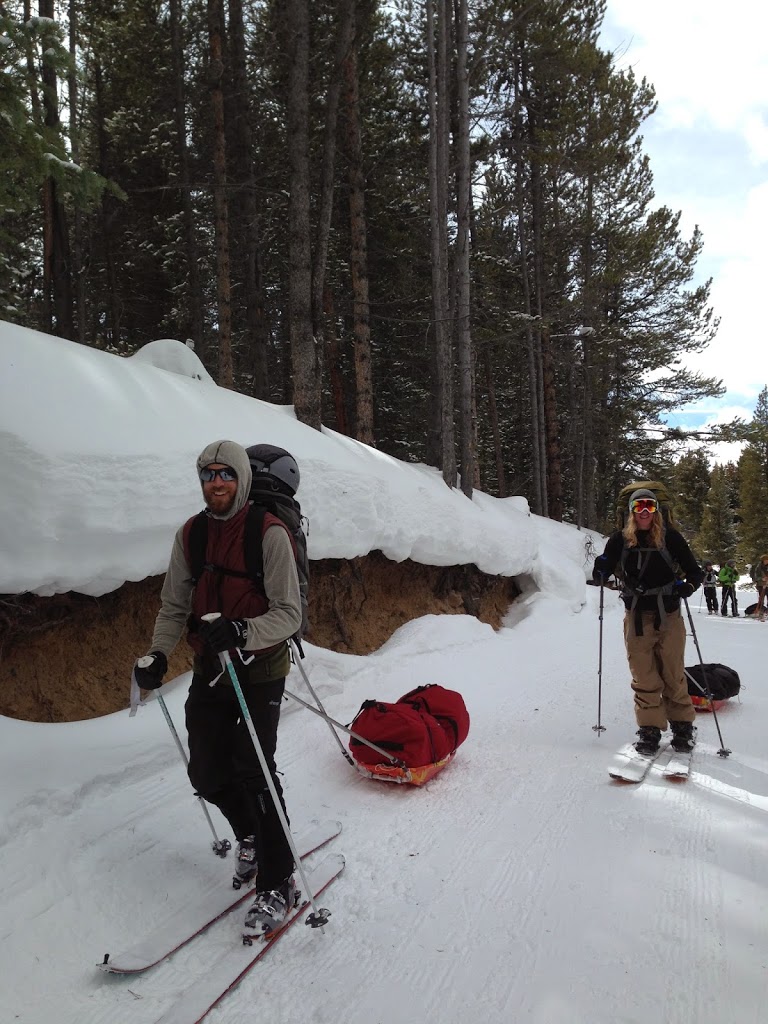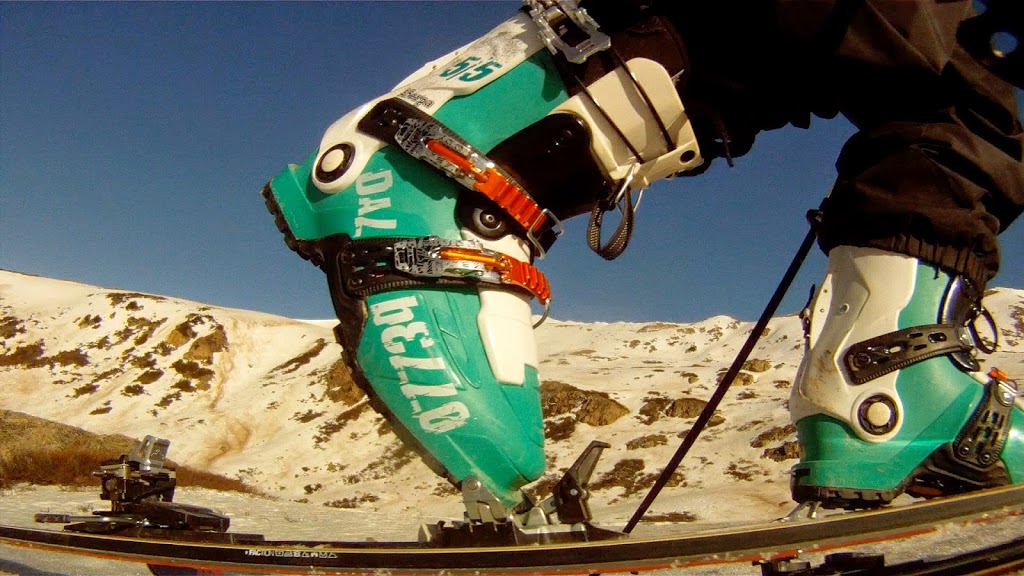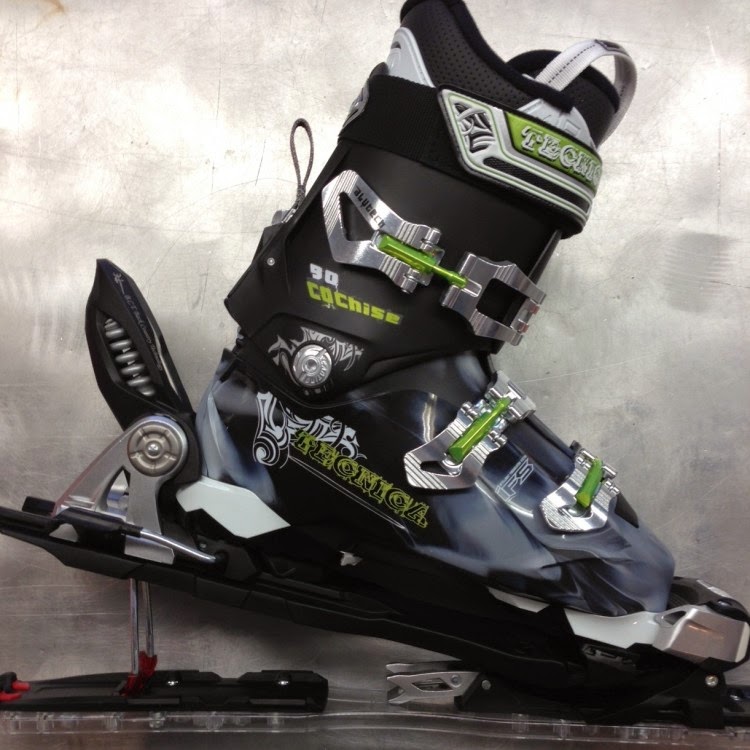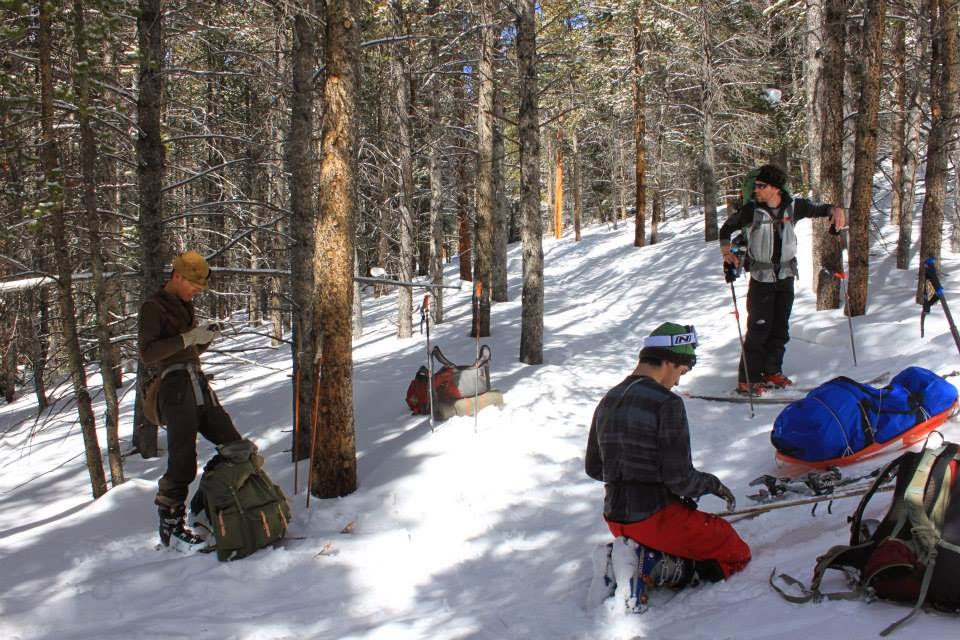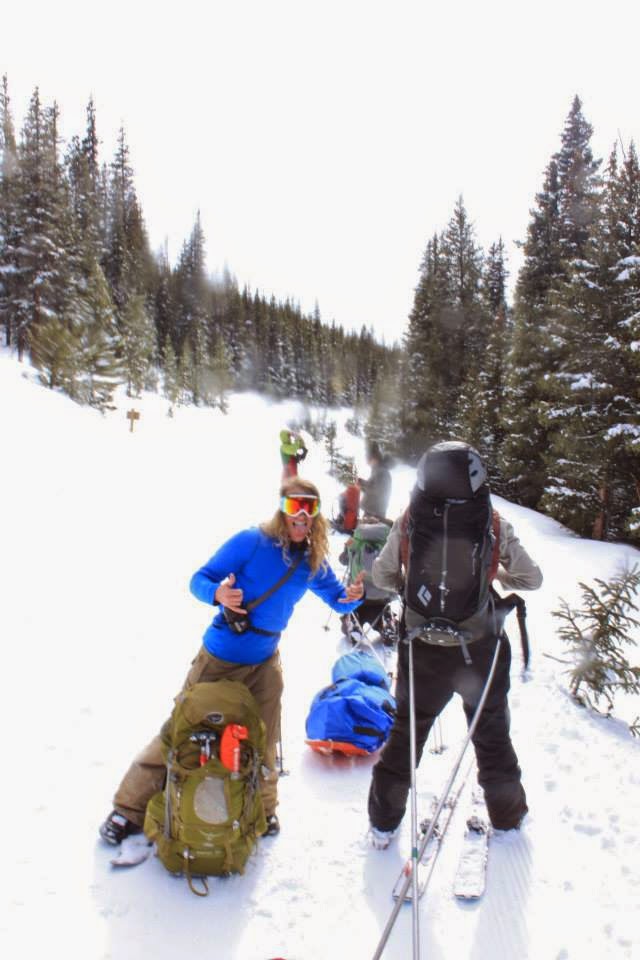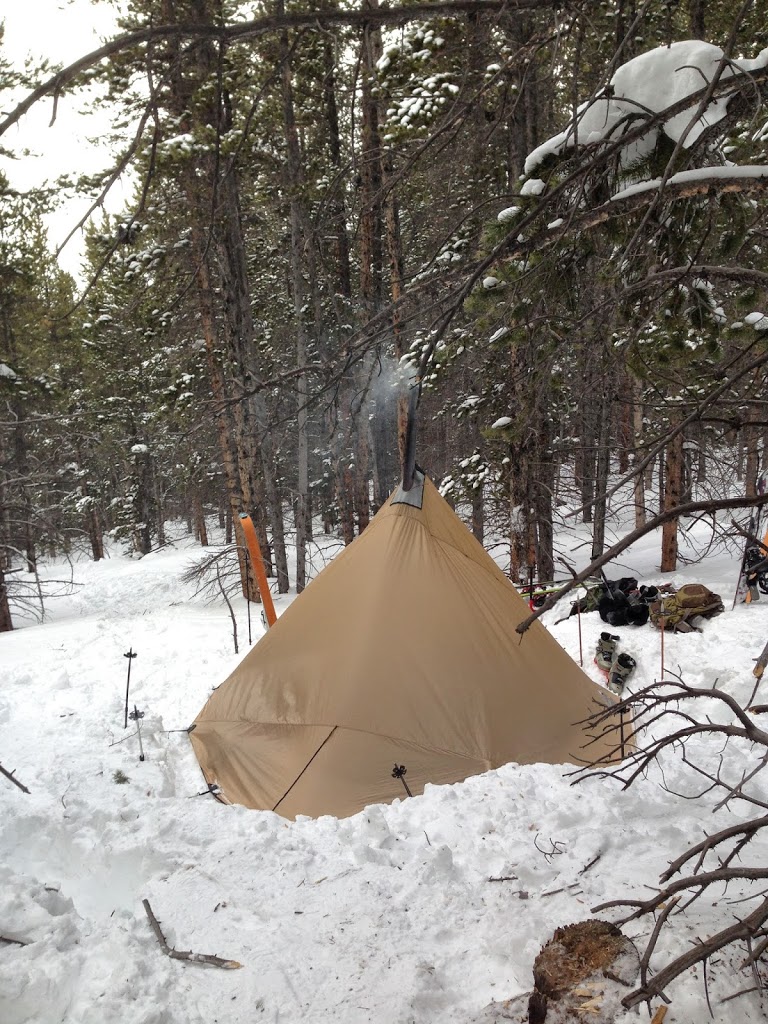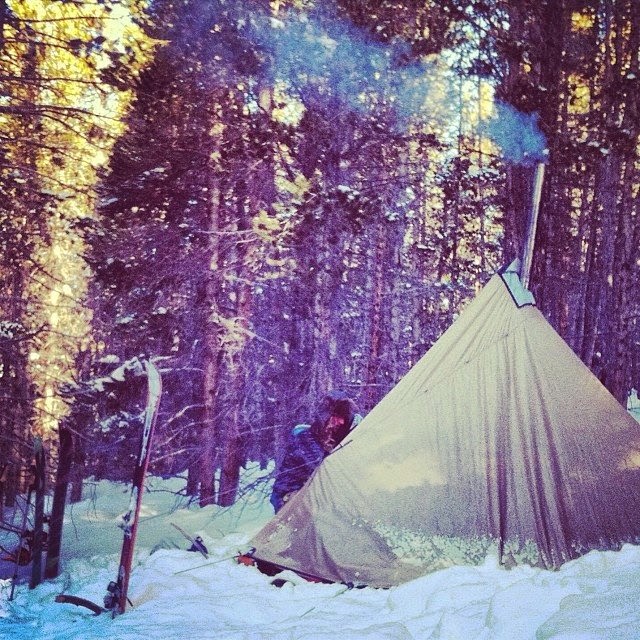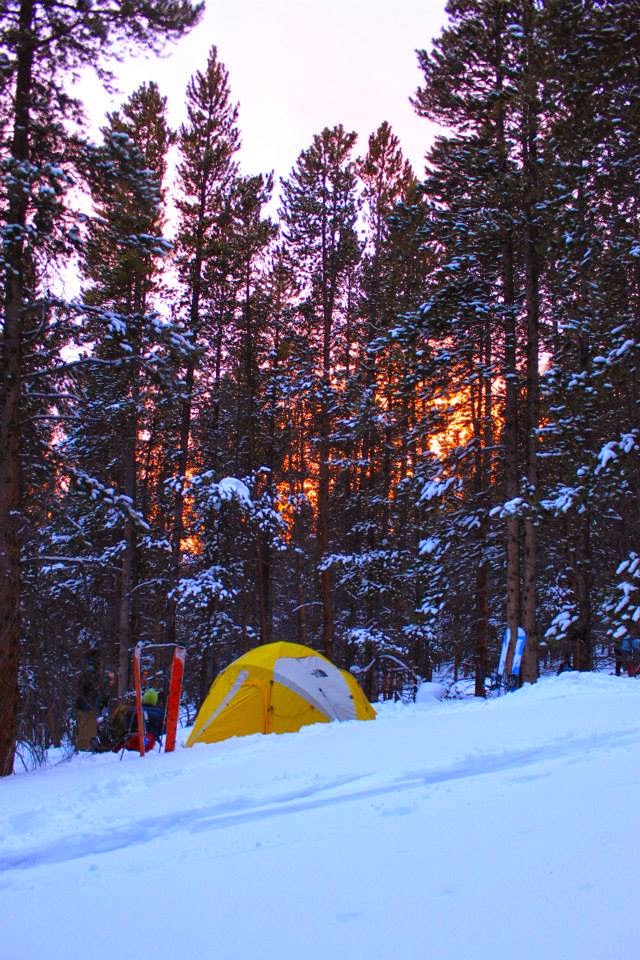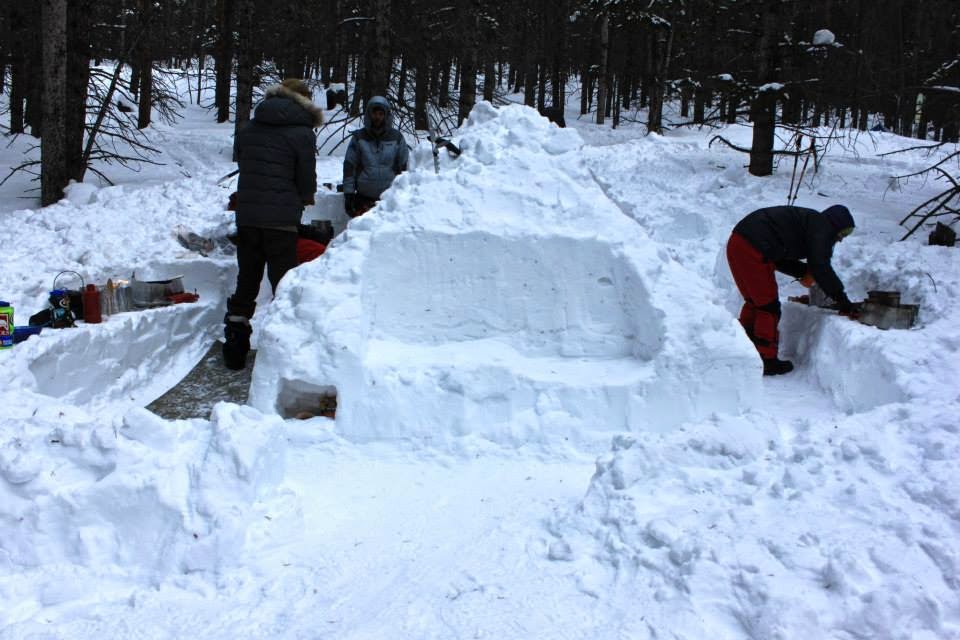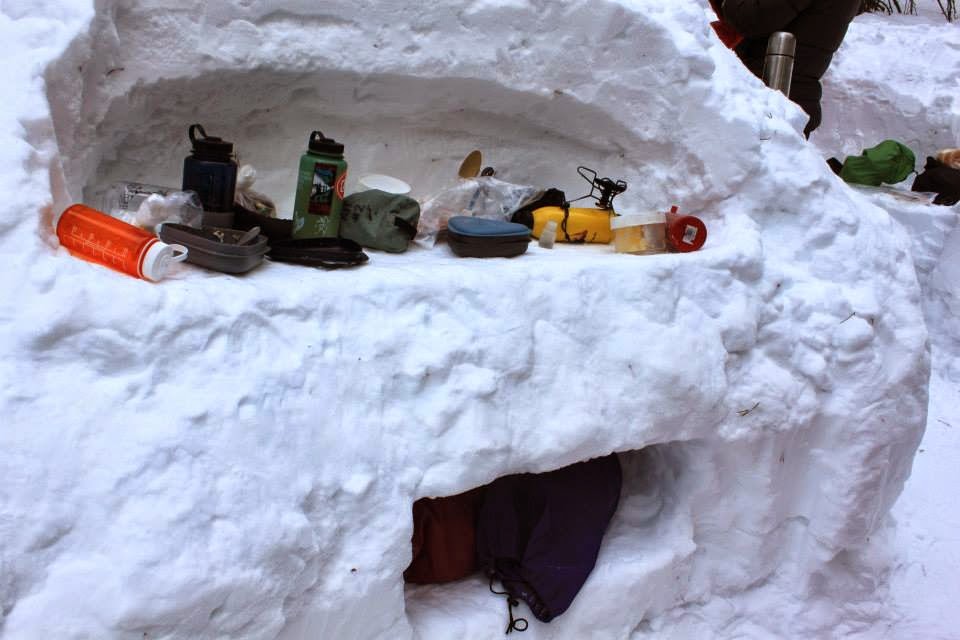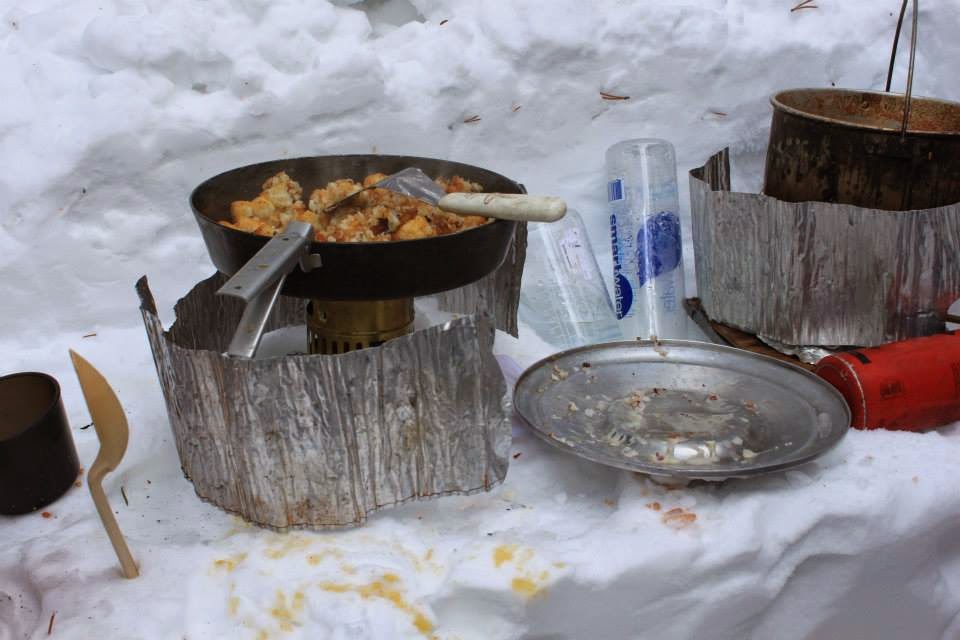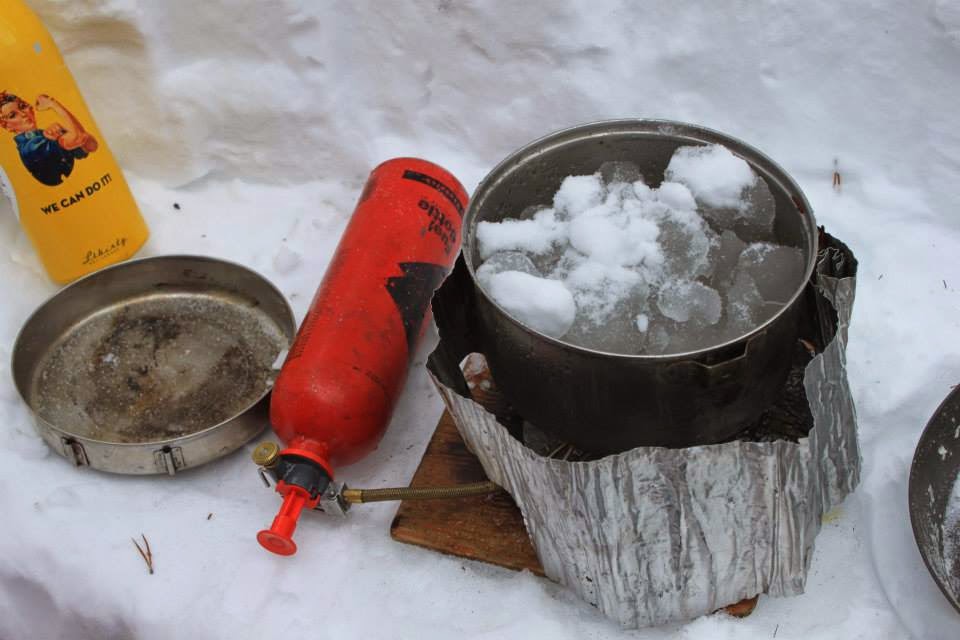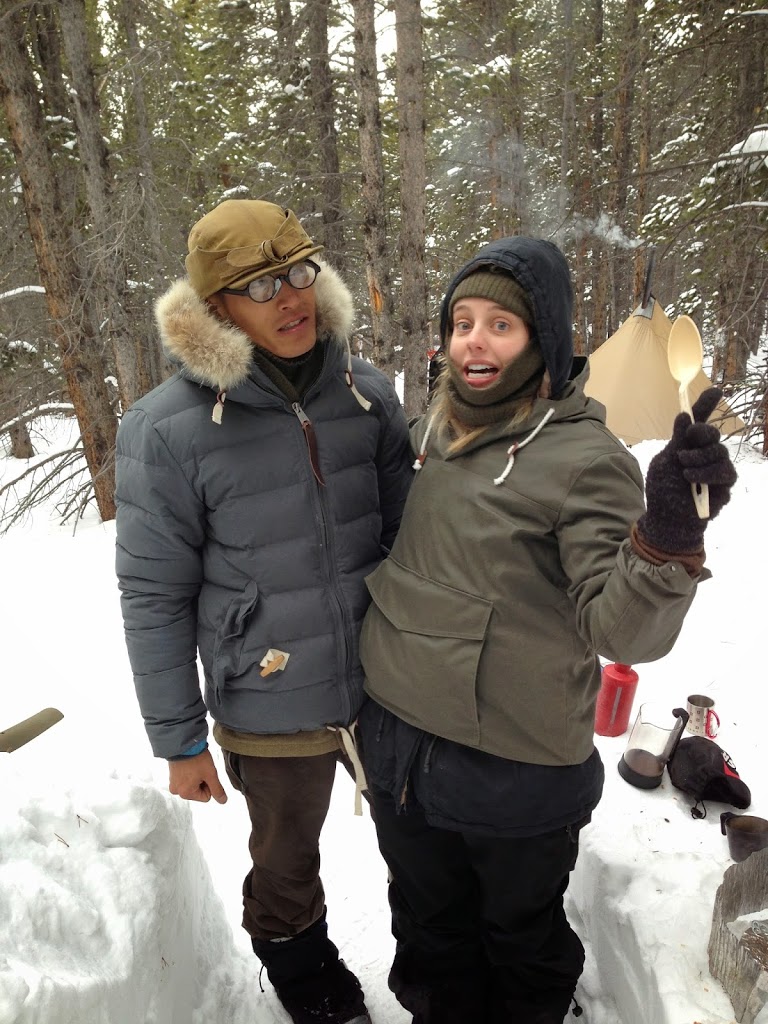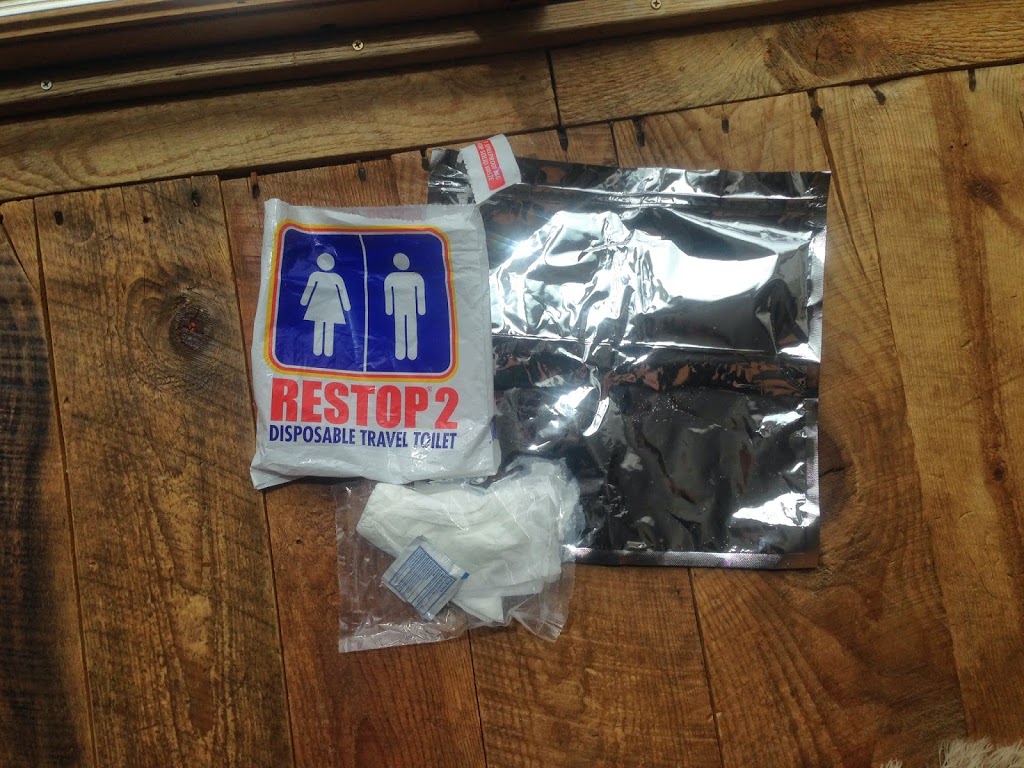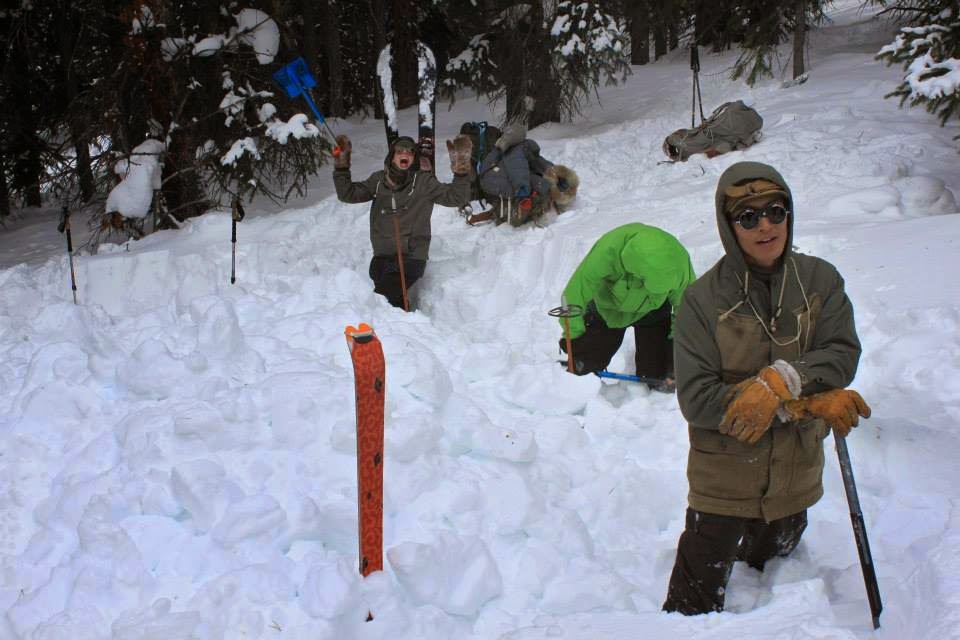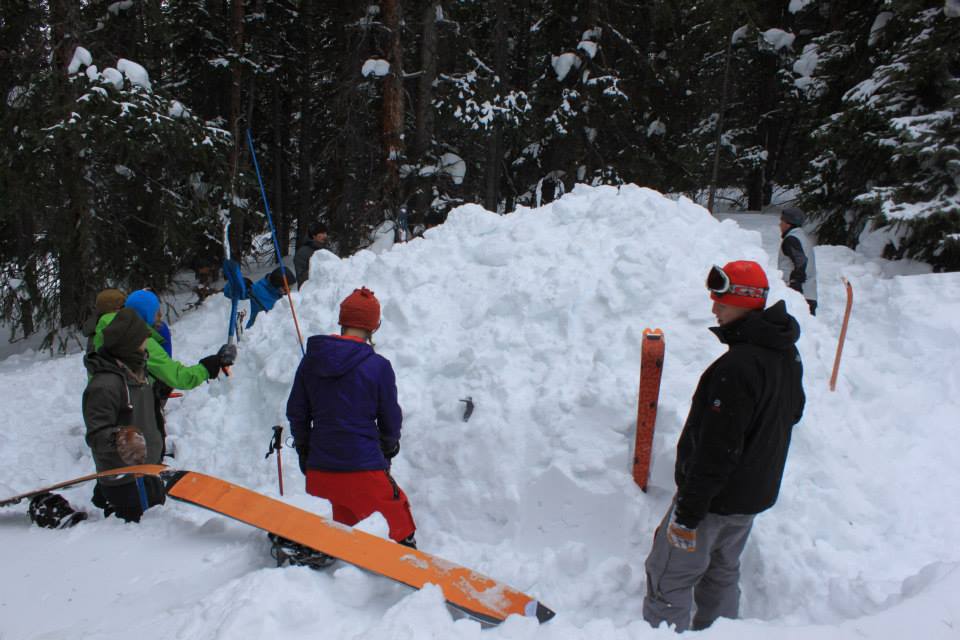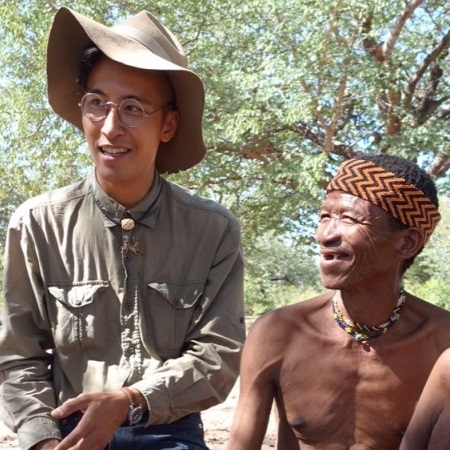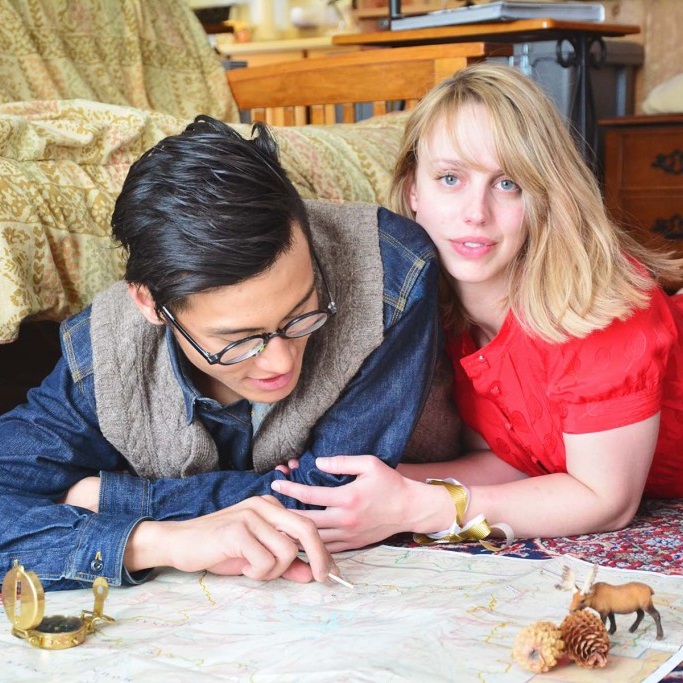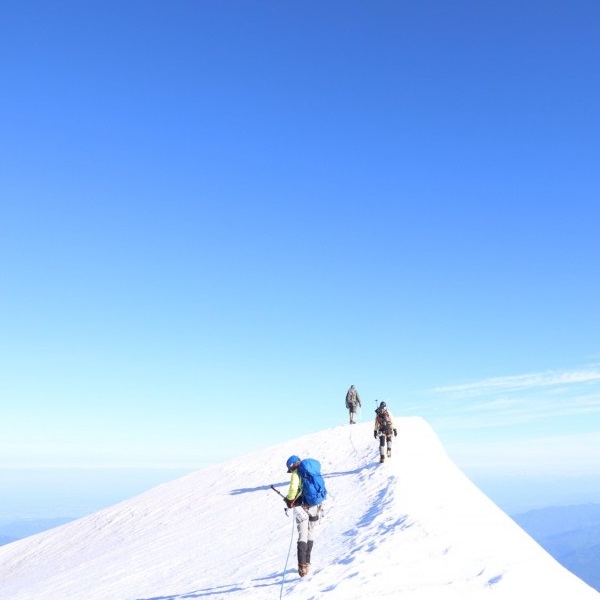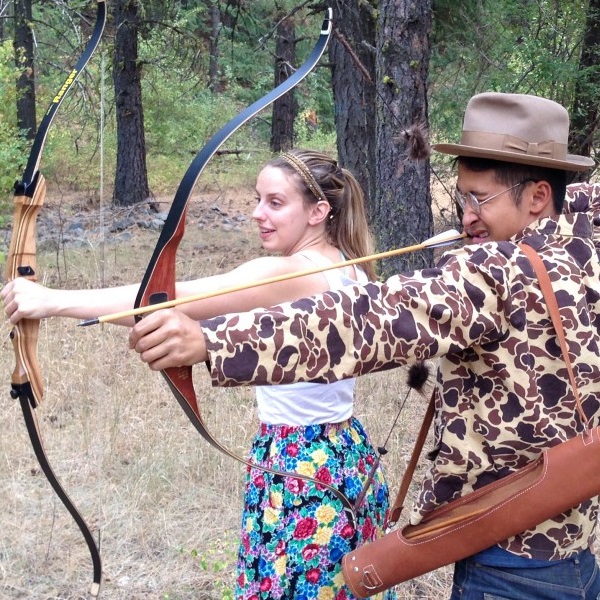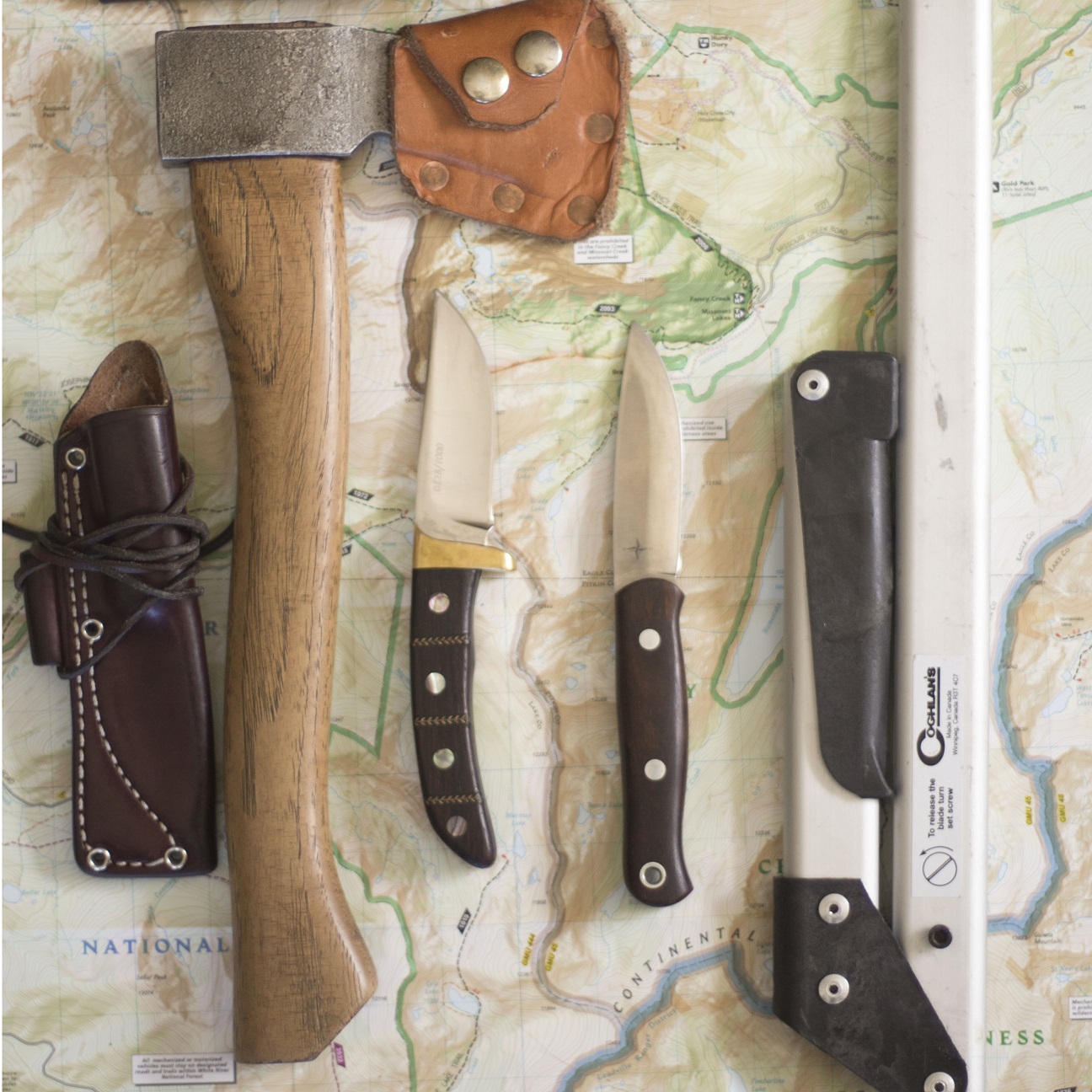The wet conditions caused a condition known as glopping which severely affected our group’s Kifaru sled. Since the sled was not waxed and well maintained it glopped every 100 yards of uphill progress. About a 4 inch cake of wet snow built up under it and it had to be overturned and scrapped. The only remedy would be to fully dry the bottom of the fiberglass sled, than spray on wax and let that cure for a few minutes. No one had brought wax or was patient enough to dry the sled. So our progress consisted of dragging the 80 lbs sled a hundred yards than scrapping it clear and repeating. It took all 4 of us our best effort to get that thing to our Quinzee village.
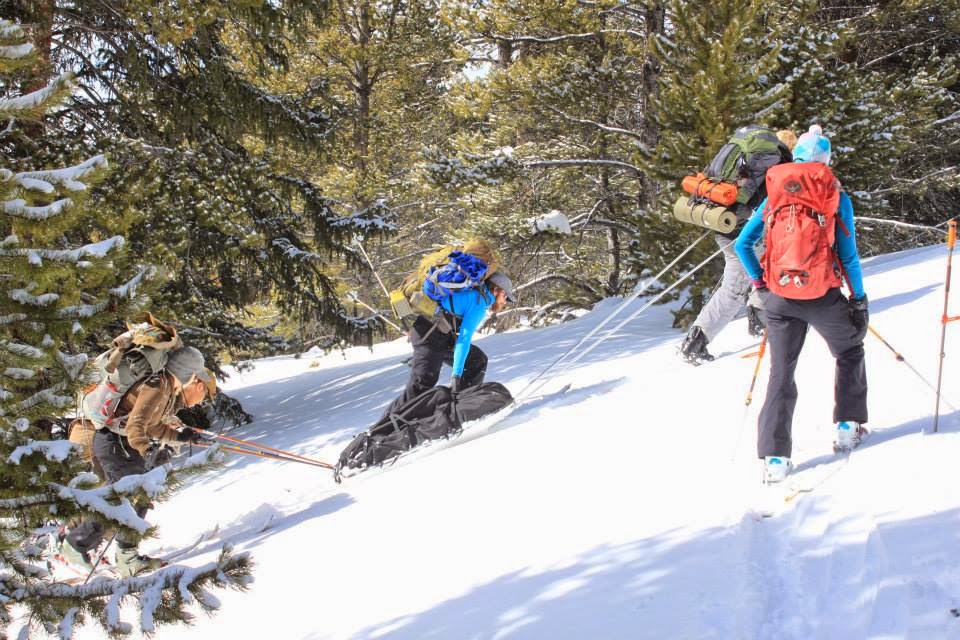 |
| Here Vic is supervising the drag, and providing helpful comments like “That sled is probably too heavy.” |
I had though that the digging of the quinzee was enough hard manual labor, but I was mistaken. After we had hauled our sled 5 miles to high camp. We had to excavate the monstrous snow pile that all 15 of us had created the week before.
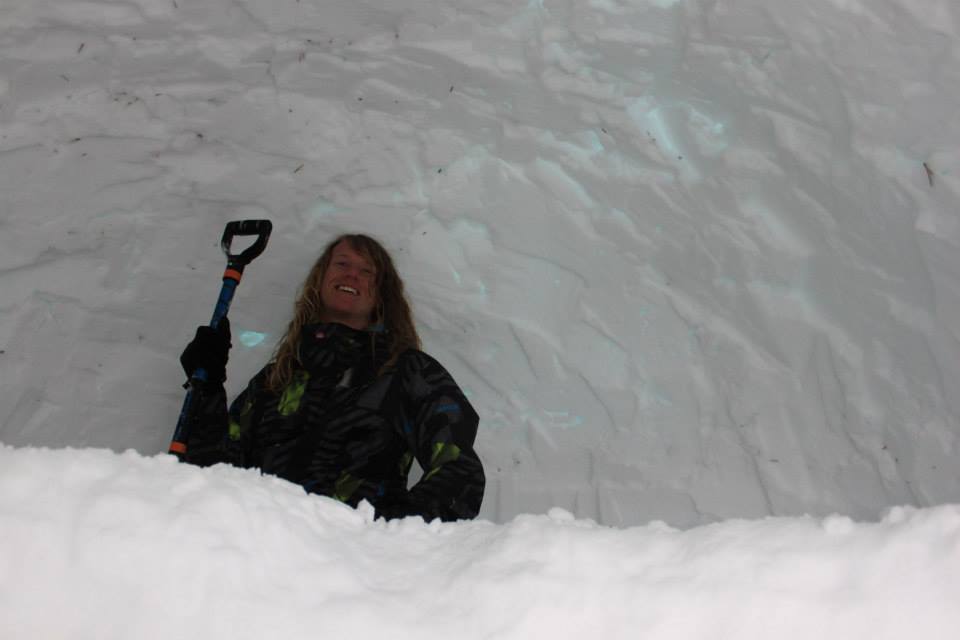 |
| Brady inside a nice cave. |
Since it was much warmer this week than last digging into the pile was wet drippy, soaking work. About 8 hours later a bit before dinner it took the 4 of us all day to dig it out but it was done.
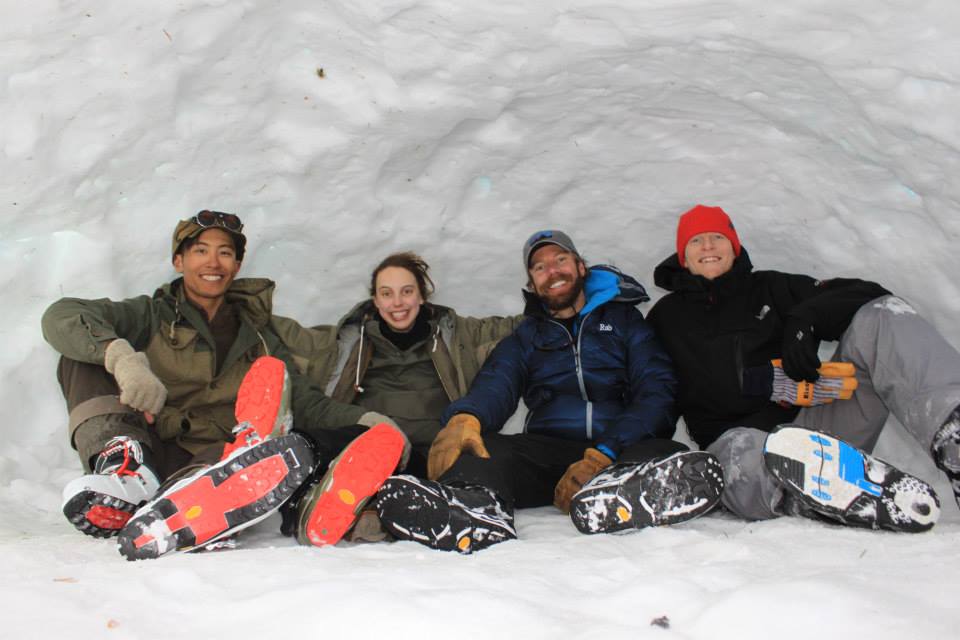 |
| Me, Emily, Donald, and Phil. A job well done. |
We move our gear inside and find out there is actually room for 6 people. We had done too good a job. Phil had gotten the most soaked of all of us from sweat and was starting to shiver uncontrollably in his wet layers.
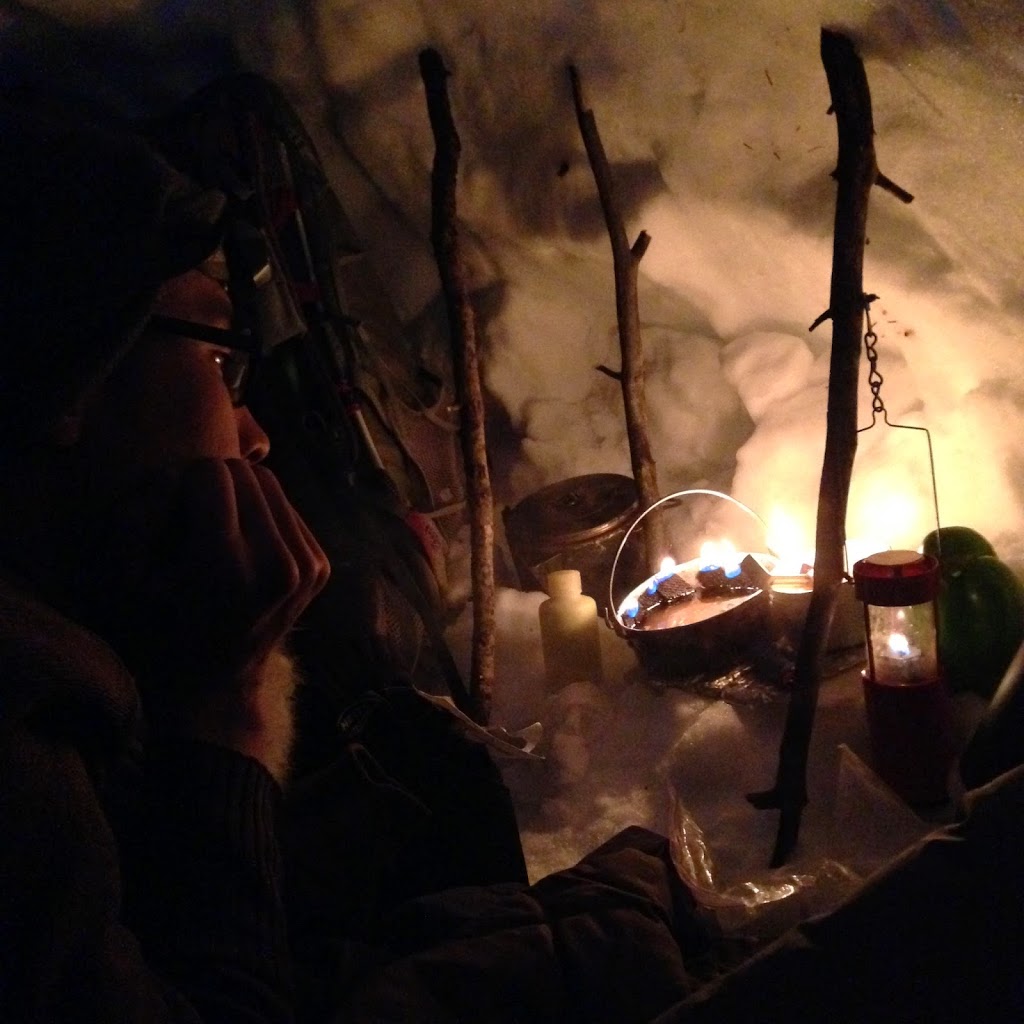
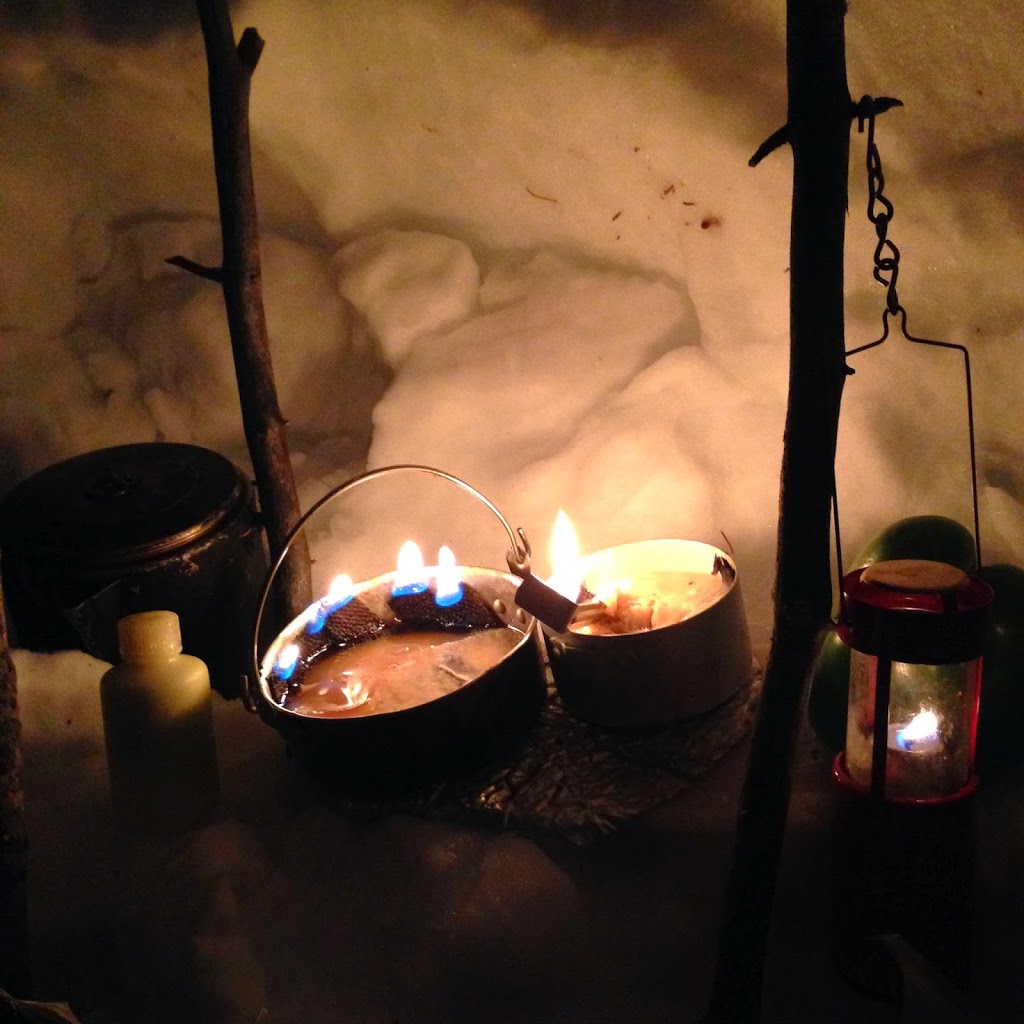 |
| We boiled water over these little lanterns! |
It was so warm inside after I light up the fire. We hung our clothes up to dry them on our avalanche rescue probes, and many of them were dry in the morning. The 12 oz of bacon fat I brought was about just enough for the weekend to light fires after dark inside our huge quinzee.
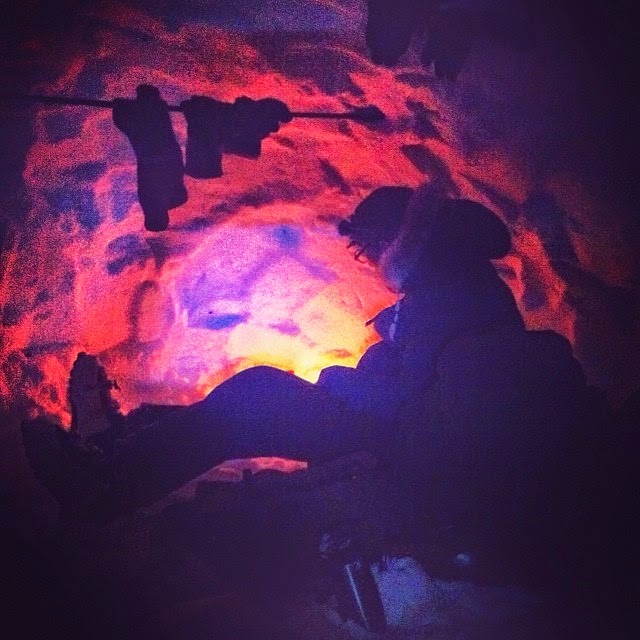
Normally a Quinzee is about 32* exactly inside if it is built right to keep out the draft. With the warm fires going inside and the outside temperatures rising, it actually melted a big hole in our snow palace. Boo.
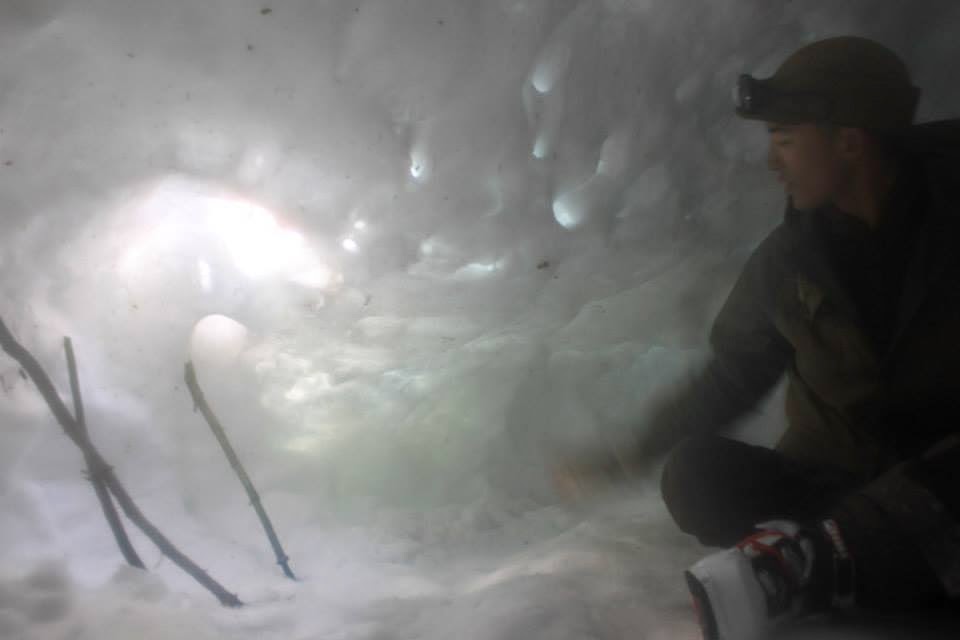
Lucky for us it was our last night. The weather was getting warmer and warmer yet it was dumping wet snow flakes on us.
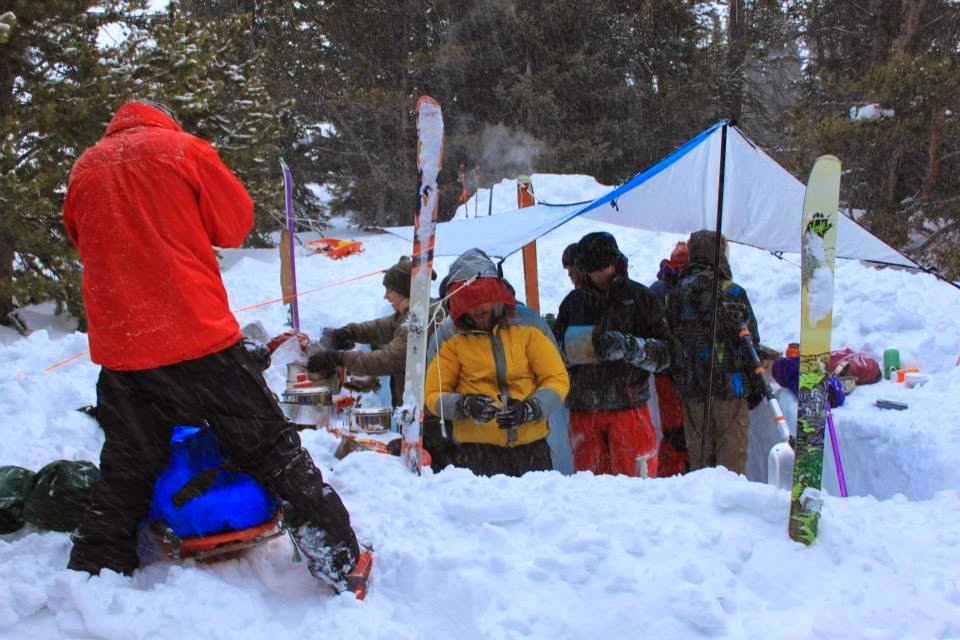
Our second kitchen was much less elaborate than the first. It was a simple pit with counters and cubbies on the sides no seats and benches this time round. Kitchen liquid waste was dumped into a sump pit in the corner.
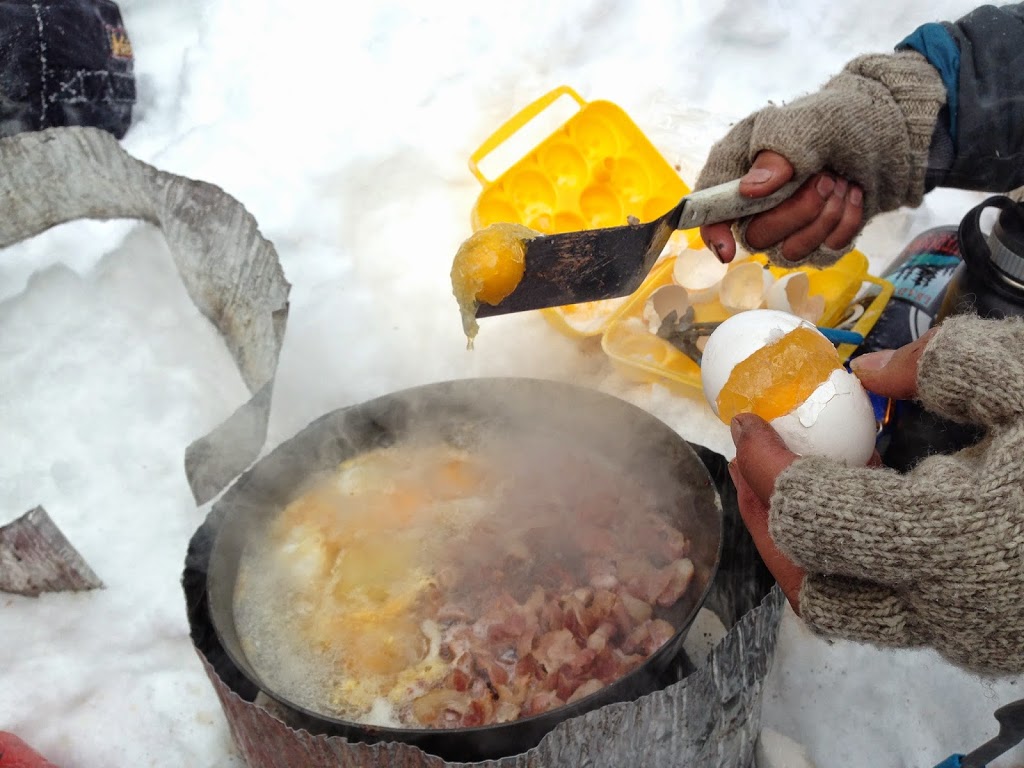 |
| Frozen eggs for breakfast. Some one forgot to keep them inside the Quinzee. |
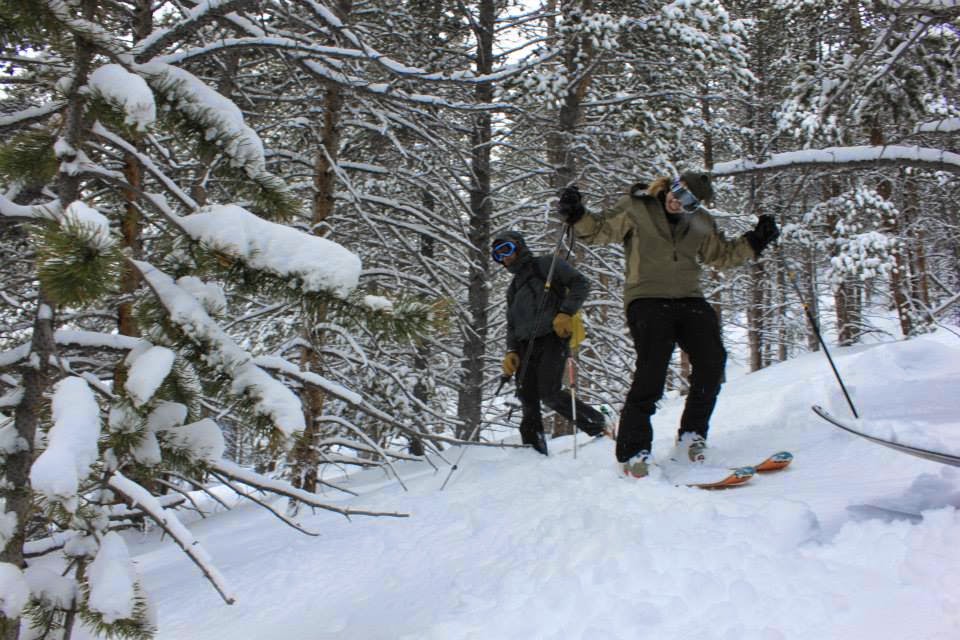
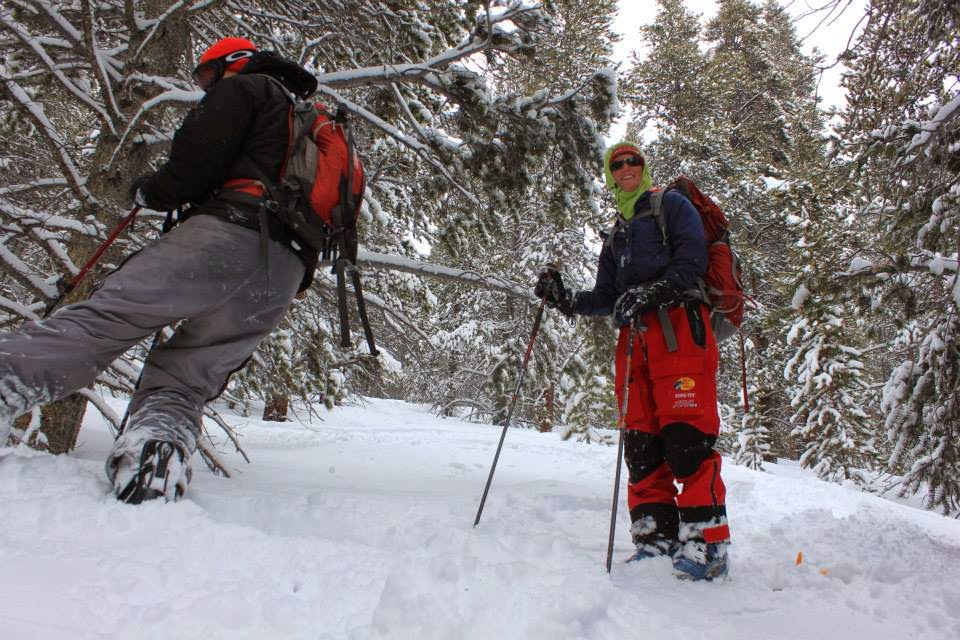
- A quinzee will never beat a nice stove heated tent. A candle and quilliqs are better than nothing but not better than a nice wood stove. A wood stove is a luxury that can be had in woodland winter camping, but if we were to go on an alpine trip or out into the arctic circle nothing or a simple quilliq is all that we may get.
- Skiing downhill with a sled even in green treed glades makes for quite the adventure.
- Bacon and cosmic brownies rule.
- Always keep snacks on hand at all times, even in bed.
- We used about 8 oz of fuel per person per day each weekend to melt snow and cook. Thats a bit under a liter per person that weekend.
- Most importantly, if its warm out don’t light the qulliq up all night and melt your shelter.

